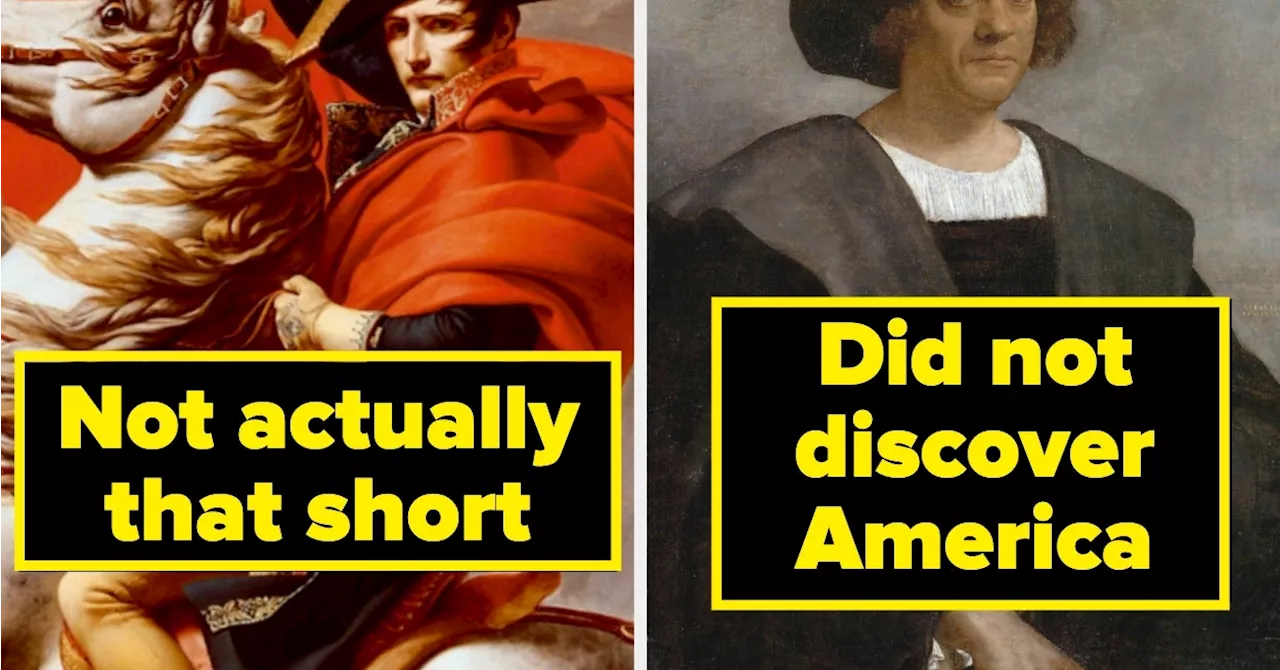Politics
Debunking 10 Common Historical Myths That Mislead Us

Historical narratives are often clouded by myths that distort our understanding of significant events and figures. Despite the digital age making fact-checking easier than ever, many commonly held beliefs remain unchallenged. Here are ten notable historical misconceptions that continue to capture public imagination.
Misconceptions About Notable Figures
One of the most persistent myths is that Anne Boleyn was convicted of witchcraft. In reality, Boleyn was executed on charges of incest, adultery, and treason. The misconception likely stems from tales told by Eustace Chapuys, a contemporary diplomat, who suggested that her alleged witchcraft was a factor in her downfall. Notably, her indictment did not mention witchcraft, highlighting how easily misinformation can take root in popular culture.
Another commonly repeated story is that of Gavrilo Princip, the assassin of Archduke Franz Ferdinand. A popular narrative suggests that Princip was eating a sandwich when he happened to spot the Duke’s car. While this detail has become part of the lore surrounding the assassination, it detracts from the serious motivations behind Princip’s actions. Writer Mike Dash of Smithsonian Magazine argues that such embellishments trivialize the historical significance of the event, which ultimately led to World War I.
The image of Nero playing the fiddle while Rome burned is another enduring myth. Historical accounts indicate that the fiddle did not exist in 64 AD when the Great Fire occurred. In fact, if Nero had played an instrument, it would have been a lyre, which was popular at the time. According to historian Tacitus, Nero returned to Rome and initiated relief efforts for those affected by the fire, contradicting the narrative of indifference.
Challenging Historical Narratives
The belief that Christopher Columbus was the first European to discover America is also misleading. While he is often credited with this feat, the Norse explorer Leif Erikson reached what is now Newfoundland, Canada, around the year 1000, predating Columbus by nearly 500 years. This fact highlights the complexity of exploration and the need for accurate historical representation.
Additionally, the portrayal of Napoleon Bonaparte as a notably short leader is rooted in myth. In reality, historical records suggest he was of average height for his time. The misconception likely arose from differences in measurement systems and propaganda used by his enemies.
The notion that medieval Europeans had a markedly shorter lifespan than people today is also oversimplified. While it’s true that the average lifespan was lower, this statistic is skewed by high infant mortality rates. Those who survived childhood often lived into their 50s or 60s, indicating that average lifespans were not as drastically different as commonly believed.
These examples illustrate that historical myths can misinform and oversimplify complex realities. While they may entertain, they often overshadow the deeper truths about our past. Understanding the realities of history not only enriches our knowledge but also fosters a more accurate portrayal of significant events and figures.
As we continue to explore history, it is essential to question widely accepted narratives and seek out verified information. By doing so, we can appreciate the rich tapestry of human experience without the distortions of myth.
-

 Politics1 week ago
Politics1 week agoDallin H. Oaks Assumes Leadership of Latter-day Saints Church
-

 Business1 week ago
Business1 week agoTyler Technologies Set to Reveal Q3 2025 Earnings on October 22
-

 Sports1 week ago
Sports1 week agoSteve Kerr Supports Jonathan Kuminga After Ejection in Preseason Game
-

 Lifestyle1 week ago
Lifestyle1 week agoDua Lipa Celebrates Passing GCSE Spanish During World Tour
-

 Entertainment1 week ago
Entertainment1 week agoZoe Saldana Advocates for James Cameron’s Avatar Documentary
-

 World1 week ago
World1 week agoD’Angelo, Iconic R&B Singer, Dies at 51 After Cancer Battle
-

 Science1 week ago
Science1 week agoChicago’s Viral ‘Rat Hole’ Likely Created by Squirrel, Study Reveals
-

 Lifestyle1 week ago
Lifestyle1 week agoKelsea Ballerini Launches ‘Burn the Baggage’ Candle with Ranger Station
-

 Health1 week ago
Health1 week agoRichard Feldman Urges Ban on Menthol in Cigarettes and Vapes
-

 Health1 week ago
Health1 week agoCommunity Unites for Seventh Annual Mental Health Awareness Walk
-

 Business1 week ago
Business1 week agoMLB Qualifying Offer Jumps to $22.02 Million for 2024
-

 Business1 week ago
Business1 week agoMega Millions Jackpot Reaches $600 Million Ahead of Drawings









